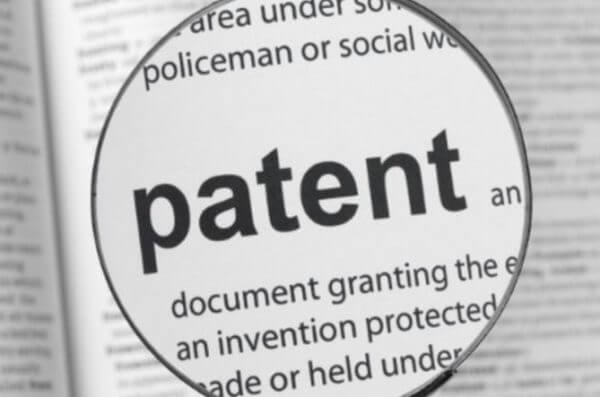This article is written by Chandana Pradeep, from the School of Law, University of Petroleum and Energy Studies, Dehradun. This article analyzes how trade secrets and patents co-exist together and helps solve the uncertainty regarding which one to choose to protect an invention.
Table of Contents
Introduction
Intellectual Property Law is a very interesting area of law as it covers a large ambit of concepts which include trademarks, copyrights, patents etc.
Patents give a right to the owner, which is exclusive and can stop other people from marketing or doing any change, use or modify the invention which is patented provided that the item which has been patented should be disclosed to the public eye, as this patent affects the society. Section 2(1)(m) defines a patent as a patent for any invention granted under this Act (Patents Act,1970).
Trade secrets are any “secret” information, process etc. which increase the value of the company and are thereby kept hidden as this hidden information increases the value of the company in the commercial market. Trade secrets do not have any specific law in India and are governed based on common laws.
The two terms protect the Intellectual property rights of an invention. Patents have various other criterias so that a particular invention can be patented whereas for a trade secret it can protect any patentable information along with any secret information that increases the value of the company.
Development of Patent Law
Patent laws are one of the older forms of Intellectual Property law which dates back to the time when Britishers were colonizing India and from there the development of patent laws started. The first act for patents was Act VI of 1856, which were developed in India was based on what the British parliament had passed, the main focus of this Act was to promote new and innovative ideas for inventions which would be very useful to the people, this also required people to reveal their invention as it would be favourable for the State, but this Act got repealed as it did not have the approval of the British crown.
Throughout the years, there has been constant repealing of all the patent laws that have been enacted as there were a lot of shortcomings in them. The Indian Patents and Designs Act, 1911 repealed all the other Acts which were in existence till then and it ensured that patent administration was done under the management of the Controller of Patents and subsequent amendments were done to the Act for granting of secret patents and to increase the patent terms from 14 years to 16 years among many others.
The Patents Act 1970 came into force along with The Patent Rules,1972 which repealed the aforementioned Act, this Act came into place after the recommendations of the Ayyangar Committee. The Act was amended by the Patents (Amendment) Act, 2005 where it dealt with dealing with product patentability in areas such as food and medicine. There was a provision that was enacted which relates to pre-grant and anti-post protest which were also introduced in the new Act.
Development of Trade Secret Law
Trade secrets have been extremely important to keep up with as if any information is available to the public domain, there will be innovations that take place by third parties, even though this results in competition, it is unfair competition as it is the ideas of one person that is being used by a third person and because of this trade secrets has become extremely important.
The relation of India and trade secrets started when the trade secret of the soft drink “Coca Cola” was asked way back in the year 1977, where the company failed to do so and voluntarily left the Indian market. Within a few years, India became a member of the World Trade Organisation(WTO) and signed the Trade-Related Aspects of Intellectual Property Rights (TRIPS) in 1994, though India opposed on the notion of making trade secrets part of intellectual property, this idea was not accepted by TRIPS. The recognition of the need for trade secret laws can be seen from international bodies such as Trade-Related Aspects of Intellectual Property Rights(TRIPS), General Agreement on Trade and Tariffs(GATT), and North American Free Trade Agreement (NAFTA).
In India, there is no such legislation to govern trade secret laws and that has caused a lot of haywires, the only recourse that people can opt for is through judicial rulings with the help of already existing laws such as Law of Contract and Law of Torts. Indian courts try to protect trade secrets through the help of common laws but it can only be done broadly.
The Indian Court has decided on three instances where the proceedings can take place:
- When an employee finds out information about a secret or any information which is controversial in nature during his employment, passes on that information to a third party either intentionally or otherwise.
- When a person who has no authority forces a superior authority for the trade secret
- When a licensee fails to maintain the secrecy of the information to which he has agreed upon by entering into a contract where it is expressly or impliedly mentioned.
Recent development
Since India is part of the TRIPS, they needed to follow the decisions which are made by TRIPs, so India had to change its laws accordingly but no specific Act was enacted as it was thought that the already existing Indian laws are capable of protecting trade secrets as well. Under TRIPS, Trade Secrets are protected under Article 39.
In the year 2008, with the increasing number of cases related to trade secrets, the National Innovative Bill which related to confidentiality and trade secrets never made it to the parliament to be passed.
Recently in the year 2016, there was a ministerial meeting between India and the trade representative of the United States where India had issued a policy called National Intellectual Property Policy, 2016 which had a brief mention on the concept of trade secrets.
Cases
John Richard Brady and Ors V. Chemical Process Equipments Pvt. Ltd. and Anr (1987)
In the case of John Richard Brady and Ors V. Chemical Process Equipments Pvt. Ltd. and Anr, the defendant was not allowed to sell or further manufacture a machine which had been innovated after he had got to know confidential information from another party. It was held that irrespective of whether there is a contract which governs the production or not, any information which had been disclosed cannot be put for unfair use as this against the principles of equity.
Steer Engineering vs. GlaxoSmithKline(2019)
In the case of Steer Engineering v GlaxoSmithKline, Steer Engineering is a company which specialises in food and manufacturing of drug delivery systems and it developed an extrusion process for a popular product(Horlicks) of GlaxoSmithKline, there was a dispute regarding the extrusion process as GlaxoSmithKline had already developed a product on their own which did the same function as what was made by Steer Engineering. The trial court held that the agreement entered relating to intellectual property was confidential under the Master Service Agreement and was the confidential information of GlaxoSmithKline and had nothing to do with the supplier.
The intersection of Patent Law and Trade Secret Law
These two concepts of Intellectual Property Rights are very different from each other. Patents are used to stop sharing of ideas and innovations with a third party for a limited period while Trade secrets protect the companies concerning its secrets and stop theft from happening of the innovation that is created by the company. Patents laws are affected by the rules and regulations of the government as it affects society as a whole whereas, for trade secrets, government regulations are not a factor which will affect it. The two forms of protection can coexist, but their relationship requires a delicate balance for both to survive. A person cannot seek the protection of innovation under both these concepts.
Prof. Dr. Claudio de Simone v. Acital Farmaceutica Srl (2020)
In this case, the plaintiff was the owner of a manufacturing company for drugs and had the patented formula in the US, he agreed on importing it to India. the plaintiff entered into a separate agreement with the defendant and revealed information which was meant to be a trade secret. The plaintiff did not have a patent for the same in India, and after his patent expired, the defendant company manufactured the same product. The Delhi high court held that the information that was treated as a trade secret could not be considered as one, and once the patent has expired all the information comes into the public domain and cannot be further protected based on being a trade secret.
There is more scope of development in the Indian scenario for the intersection of patent law and trade secrets because, even though there are laws governing patents, there is no such thing for trade secrets.
Choosing between Patents and Trade Secrets
Choosing between patentability and trade secrets can be a daunting task, as both of them protect intellectual property and can be used to protect the same innovation on different criteria. Both these terms are not dependent on each other and are exclusive in nature, both of these can be used to protect the innovation.
Kewanee Oil Co. v. Bicron Corp(1974)
This case, the plaintiff was a manufacturer of synthetic crystals and his employee had let out a trade secret which caused the dispute. The court held that trade secrets and Patents can exist together as both of them have a different purpose and both are very necessary for intellectual Property Rights. The court had decided three factors based on which it could be decided whether to choose patents or trade secrets and they are:
- The trade secret which the owner believed to be a trade secret could be a valid patent
- The trade secret cannot be patentable and this is known to the owner
- The trade secret whether it could be patentable is not sure of.
The situations where it is known that it cannot be patented will not be patentable but the ones where there is a lack of clarity, even if they are not patented it will just be compared to that of the ones where there is clarity that the trade secret cannot be patented.
Patentability
The first step to do is to find out if the innovation can be patented in the first place and this can be known even before there is an official determination of patentability if it cannot then trade secret is the best possible way to protect the innovation. If the trade secret cannot be kept, then it is best to get a patent on the innovation and this saves the owner from a lot of unnecessary expenditure.
Under the Patents Act,1970 the requirement to get a patent is when the invention is new and innovative and can be applied by industries if these are fulfilled the invention will get a patent. However under Section 3 of the Patents Act,1970 there are specific items that are barred from being patented, an example is a method of agriculture, all of these factors have to be taken into account.
Terms of protection
Patents are said to be protected for twenty years or a date of earliest priority from the date of filing, though it states that patents will be protected for twenty years, this is not the case as a patent is not granted as soon as the application is filed and hence will be lower than the prescribed time.
However, in the case of trade secrets, there is no prescribed time as to for how long it will be protected for and is more lenient and flexible. There are no extra charges incurred for the protection as it does not expire like in the case of patents hence it is more beneficial for the innovators to protect their invention with the help of trade secrets.
Enforcement
The enforcement of patents is a very hard task, as for this the first step is to prove infringement and this is very hard if it has been done by a party who is in a foreign land or a different jurisdiction. In cases of trade secrets, the same will be applied but trade secret infringements can be proved upon evidence.
Injunctions
If a company considers damages in the form of money to be scarce, then the best option is to opt for trade secrets. Before, there used to an automatic injunction that took place, but after the case of eBay Inc. v. MercExchange, L.L.C (2006) where the injunction was left upon the discretion of the judge, where if the following four conditions were satisfied it would be granted:
- Whether the plaintiff went through damage that was irreparable?
- Whether the remedies are not enough to compensate for the injuries that were caused to the plaintiff?
- Whether a remedy based on equity is needed, given the current scenario of both the parties?
- Whether it would be against the interest of the public if a permanent injunction is given?
Prior user rights
Prior user rights to be used as a defence in the case of patents, the process of manufacturing has to be used in a commercial environment for a year before the process of filing the first patent or before a certain time as decided by the inventor. The party who wants the defence is going to have to prove the infringement that has occurred. Trade secrets once the secret is in the hands of another person, the whole objective is lost, it is difficult to prove infringement but can be done so if the evidence is provided.
Disclosure
Trade secrets revolve around the concept of “non-disclosure”, as it is expected that the trade secret that is used for their innovative invention remains as a secret because there is very valuable information. In the case of patents, once the disclosures of the patents are published, it can be used by a third party to compete with them in the market by innovating the already existing innovation.
Costs
Patents are quite expensive and most people do not prefer this over trade secrets, as the latter is easier and less expensive compared to patents to procure.
Choosing both Patents and Trade Secrets
Can both patents and trade secrets be used together to protect an invention? Yes, it is possible, as both of them are not the same and are complementary to each other.
Pre-publication
When the patent is to be disclosed(published), that does not mean that the trade secrets of that invention will also be disclosed. For a specified time, the information is in full secrecy and the time limit varies from country to country. For example in the case of the United States, it is kept in secrecy for a period of 18months. During this time, if the trade secret is still considered as one it will not be disclosed, if the information has been used in wrongful means, recourse can be taken for the damage incurred.
Once the time is over, the company has two option which is either to avoid to avoid publication and the disclosure of the trade secret by abandoning the application for patent in an express manner or the company can protect the trade secret even after the time prescribed after filing non-publishing with the patent application which will allow the patent to mature. If the application is still in secrecy, the company can evaluate the scope of protection of their invention, if they are not satisfied they can eventually leave the filing of the patent and just opt for a trade secret.
Different Aspects of the Invention
Both patents and trade secrets can be used on the same product or invention as both serve a different type of protection to intellectual property. It is very important to decide which aspects of the invention will be protected by trade secrets and patents. Having an invention protected by both of these are an added advantage in the market and will be very beneficial for the owner of this intellectual property.
Best Mode
Even if a company uses both the components to protect the inventions, it still has to be protected by the “best mode” which has to be disclosed during the time of patent filing. The best mode has to be the one known by the owners of the invention during the filing of the patent application.
Gradually, there are chances of the “best mode” being obsolete as there are chances of a better mode being known to the owners but they are under no obligation to reveal them and the better mode can be a trade secret of the company.
Conclusion
For the intersection of these two concepts of patents and trade secrets, it is very important for there to be a balance between the two. Many people fail to understand that there are very distinct differences between these two and think that only one can be used to protect their innovative invention, this is a wrong notion as both these terms are used to get different outcomes. Before invoking these two concepts, companies inquire about which one to use but it is advantageous for them if both of them are used together as the companies get an edge over their rival companies in the market, therefore both these terms have to be understood for what they are and the edge that they give to the owners of the invention.
References
- https://www.lexology.com/library/detail.aspx?g=b4e2cdbf-0eb6-48a2-950f-211e6de9a2ac
- https://www.mondaq.com/india/trade-secrets/783558/what-to-choose-between-trade-secrets-and-patents
- https://www.globalpatentfiling.com/blog/what-choose-between-trade-secrets-and-patents?utm_source=Mondaq&utm_medium=syndication&utm_campaign=LinkedIn-integration
- http://sbj.hnlu.ac.in/the-conundrum-of-co-existence-of-patents-and-trade-secrets/
- https://www.wipo.int/edocs/mdocs/sme/en/wipo_ip_bak_03/wipo_ip_bak_03_www_34147.pdf
- https://www.mondaq.com/india/patent/748102/patent-law-developments-in-india
- https://ipindia.gov.in/history-of-indian-patent-system.htm
- https://www.dailypioneer.com/2016/columnists/indias-patent-laws-journey-from-british-raj-era.html
- https://blog.ipleaders.in/what-is-a-patent-law-in-india/
- http://www.legalserviceindia.com/legal/article-310-protection-of-trade-secrets-under-indian-law.html
- https://www.khuranaandkhurana.com/2020/06/09/protecting-trade-secrets-in-india-in-the-absence-of-a-regime/
- https://www.rkdewan.com/articledetails.php?artid=176
- https://www.scconline.com/blog/post/2020/09/12/the-interplay-of-patents-and-trade-secrets-in-india-has-the-conundrum-settled/
- https://www.hdp.com/blog/2019/04/30/prior-user-defense-protects-trade-secret-owners-whose-secret-is-patented-by-another/
LawSikho has created a telegram group for exchanging legal knowledge, referrals and various opportunities. You can click on this link and join:
 Serato DJ Crack 2025Serato DJ PRO Crack
Serato DJ Crack 2025Serato DJ PRO Crack











 Allow notifications
Allow notifications



